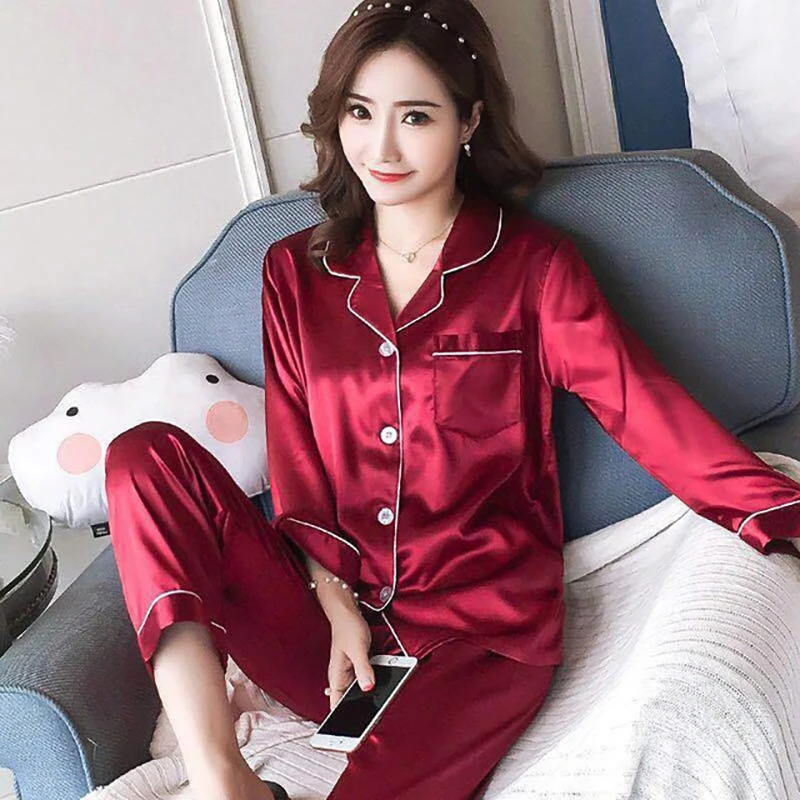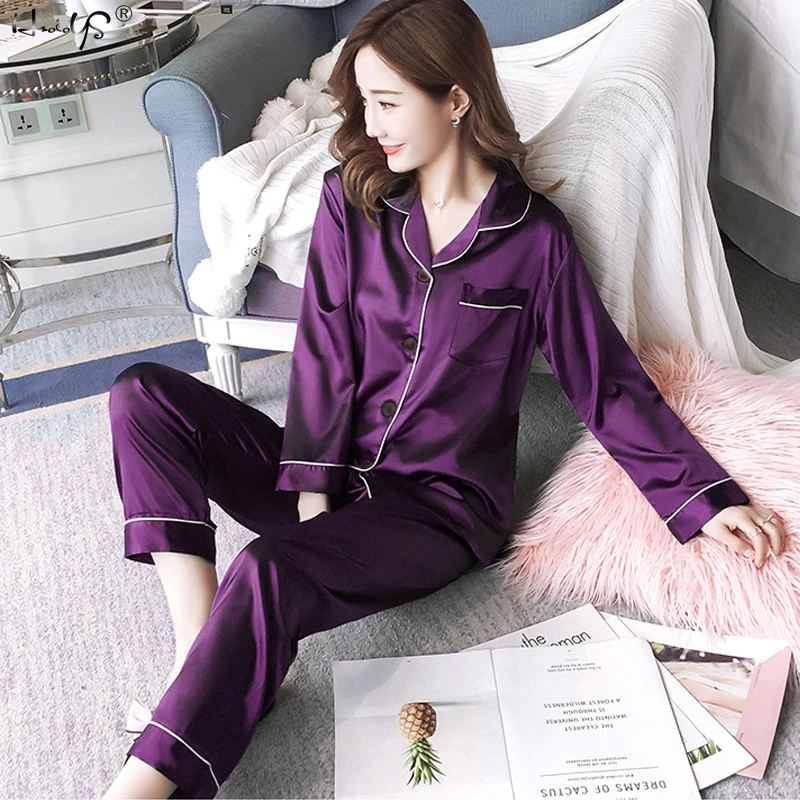Introduction
Sleepwear has evolved significantly over the years. It plays a critical role in our sleep experience. This article explores sleepwear’s history, materials, styles, and its essential role in achieving a good night’s rest.

A Brief History of Sleepwear
Sleepwear has a long history, dating back to ancient civilizations. In ancient Rome, people often wore simple tunics made of wool or linen when going to bed. These garments were primarily functional and focused on comfort, given the often chilly climate. Egyptian society also had its unique approach to sleepwear, notably linen garments well-suited for their warm climate.
As time went on, sleepwear styles changed. During the Middle Ages, men and women wore heavier nightclothes. For men, this often meant a nightgown, while women wore long, flowing gowns made of various materials. However, these garments were still more about functionality than fashion.
By the 19th century, sleepwear began to resemble what we know today. The Victorian era saw the introduction of more intricate designs and richer fabrics. Nightgowns were common for women, while men wore long shirts that draped down to their knees. This period marked the beginning of sleepwear being viewed not just as a necessity but also as a form of self-expression.
The 20th century brought about massive changes in sleepwear. The two World Wars prompted functional designs that were also stylish. The introduction of lighter materials like cotton and polyester made sleepwear more comfortable. The 1960s and 1970s saw a cultural shift, leading to a wider variety of styles, including the popularization of pajamas.
Pajamas became a staple in many households. They were no longer just for sleep; they were also worn for lounging around the house. This trend continued into the late 20th century, when designer brands began making sleepwear a fashion statement.
Today, sleepwear encompasses a wide range of styles and materials. From satin sets to comfy cotton pajamas, the options can suit everyone’s tastes. The rise of athleisure also led to the popularity of sleepwear that doubles as loungewear, appealing to modern consumers.

The Role of Materials in Sleepwear
The material of your sleepwear plays a critical role in how well you sleep. Options vary widely, each having particular benefits. Cotton, for instance, is a popular choice due to its breathability. It is soft against the skin, allowing for comfort throughout the night. Cotton can absorb moisture, making it suitable for those who sweat during sleep.
Another popular material is silk. Known for its luxurious feel, silk sleepwear offers an elegant touch. It regulates temperature well, making it suitable for both warm and cool weather. Silk is also hypoallergenic, causing fewer allergic reactions compared to other fabrics.
Flannel sleepwear is ideal for colder months. Its soft texture provides warmth and comfort. Flannel is often made from brushed cotton, giving it a cozy feel that many people love during winter.
Linen is another option making waves in the sleepwear market. Its breathability and moisture-wicking properties make linen perfect for summer nights. The fabric is also naturally anti-bacterial, making it a healthy choice for sleepwear.
Blends of materials are also common. Many brands combine cotton and polyester, capitalizing on cotton’s breathability and polyester’s durability. This makes for a balanced sleepwear option that can withstand many washes while remaining comfortable.
When choosing sleepwear materials, consider your personal preferences. Do you tend to sweat at night? Opt for cotton or linen. Do you prefer a luxurious feel? Silk is the way to go. The right material can greatly affect your sleep quality.
Styles of Sleepwear for Modern Living
When it comes to sleepwear, numerous styles are available today. Each style caters to different preferences and needs. The classic pajama set remains a top choice for many. Typically consisting of a button-up shirt and matching pants, these sets offer a timeless look. They are available in countless fabrics, from soft cotton to luxurious silk.
Loungewear has gained popularity in recent years. This style blurs the lines between sleepwear and casual wear. Loungewear is versatile, allowing wearers to feel comfortable in their homes and during quick errands. Many loungewear sets consist of soft joggers and cozy hoodies or tees, making them practical choices.
Nightgowns are another option that appeals to many. They come in various lengths and styles, from simple to elegant. Nightgowns can feel very feminine and are often made from soft materials like cotton or silk. They offer freedom of movement, making them a popular choice for women.
Boys and girls also have a range of sleepwear styles designed just for them. Graphic tees paired with comfy shorts or bottoms are popular among children. These sets often feature beloved characters, making bedtime more enjoyable for kids.
For men, sleep shorts and tank tops are often preferred, especially in warmer climates. This style combines comfort with a casual look, making it ideal for lounging before bedtime. Many brands offer stylish and functional options, ensuring men can feel good while also being comfortable.
The rise of eco-friendly options has also become a significant trend. Many brands now offer organic cotton sleepwear and sustainable fabrics. This shift reflects a growing awareness of environmental concerns and promotes healthier choices, aligning with the values of today’s consumers.

The Psychological Impact of Sleepwear
Sleepwear isn’t just about comfort; it can also affect our mental state. Wearing proper sleepwear can signal to your brain that it’s time to relax. This mental cue helps prepare your body for sleep. When you don comfortable clothing, your body begins to unwind. It reduces stress and anxiety levels, creating a positive environment for sleep.
In contrast, if you wear work clothes or tight-fitting garments to bed, it can create discomfort. This discomfort can lead to restlessness and poor sleep quality. Therefore, choosing sleepwear that feels good and offers the right fit is essential.
Our clothing choices can also influence our self-image. When you wear stylish sleepwear, it boosts your confidence. You feel good about yourself even in the comfort of your home. Many people enjoy matching pajamas or themed sleepwear, especially during holidays. It enhances the mood and adds a fun element to bedtime.
Furthermore, sleepwear can have a grounding effect. When you establish a bedtime routine that includes changing into sleepwear, you create a positive habit. This routine sets the stage for restful sleep. It signals the end of the day and prepares your mind for rest.
In homes where couples share sleeping spaces, matching sleepwear can enhance the bond. It fosters a sense of unity and partnership. Wearing complementary styles builds a comfortable and loving atmosphere, improving relationships.
Many people find joy in selecting their sleepwear before bedtime. Choices that they make contribute to a comforting ritual. Gathering your favorite pairs of pajamas or loungewear serves as an act of self-care. While it might seem minor, these choices contribute to your overall well-being and mental health.
In summary, sleepwear goes beyond mere fabric and style. It has a direct impact on our mental state and how well we sleep. Finding sleepwear that makes you feel relaxed and happy can create a positive environment for restful nights.
Choosing the Right Fit
Finding the right sleepwear fit is crucial for quality sleep. Poorly fitted sleepwear can lead to discomfort, which might hinder your ability to fall and stay asleep. It’s essential to choose sleep garments that allow for ease of movement. You should feel relaxed without any constriction.
For pajamas, aim for a fit that isn’t too tight. Loose-fitting pajamas allow freedom, making it easier to change sleeping positions. If the fabric clings to your body, it can create a feeling of being trapped. It might lead to tossing and turning, reducing sleep quality.
When choosing nightgowns, consider the length and cut. Longer gowns can provide added comfort during colder months. However, ensure they do not drag on the floor, which can cause tripping. Opt for styles that allow for easy movement in bed, as you don’t want fabric shifting against your skin.
For children, a proper fit is equally essential. Kids grow fast, so consider purchasing sleepwear that allows some room for growth. However, avoid buying items that are excessively oversized. Loose garments can also become hazards during sleep.
Men often prefer fitted pajama pants and shorts. Look for options with an elastic waistband for comfort. This feature allows for easy adjustments without constricting the waist. A well-fitted tank top or sleep shirt can offer comfort and ensure a good night’s sleep.
When it comes to fabric selection, look for options that won’t overheat during the night. Fabrics like cotton or bamboo offer breathable alternatives. Loose weaves or breathable designs can prevent you from tossing and turning.
A better fit directly relates to quality sleep. If you struggle to find comfortable sleepwear, consider shopping during sales or clearance events. Many retailers offer an extensive selection of sizes and styles, so take your time to test out new options.
Caring for Your Sleepwear
Caring for your sleepwear is essential for maintaining its quality and comfort. Proper washing and drying can prolong the life of your sleep garments. Follow the care instructions specific to each fabric type. This step ensures that your sleepwear remains both comfortable and stylish.
Start by sorting your sleepwear by color. Wash dark and light garments separately to avoid color bleeding. Use a gentle detergent, as harsh soaps may irritate your skin. Consider using a mild fabric softener for cotton and linen sleepwear to ensure they remain soft.
When washing, it’s usually best to use a cold-water cycle. Hot water can cause fabrics like cotton and polyester to fade and lose shape. Also, avoid using bleach, as it can weaken fibers and lead to damage.
Drying your sleepwear should be handled delicately. If possible, air dry your garments. Hanging them up can prevent shrinkage and maintain their original shape. However, if you use a dryer, choose a low-heat setting. High heat can damage delicate fabrics like silk and lead to unnecessary wear over time.
Storing sleepwear properly is also essential. Ensure that it is clean and dry before folding or hanging in your closet. Avoid tossing sleepwear into drawers without folding, as this can create wrinkles. Consider using hangers for light fabrics like silk to keep them wrinkle-free.
Every now and then, check for signs of wear and tear. Holes, loose seams, and fading colors are all indications that it may be time to replace your sleepwear. Regularly updating your sleepwear selection helps maintain comfort levels.
Taking the time to care for your sleepwear yields long-lasting benefits. It not only enhances comfort but also promotes a sense of pride in what you wear to bed. The better you take care of your sleepwear, the more luxurious your nighttime routine will feel.
The Future of Sleepwear
As we look to the future, the sleepwear industry continues to innovate. New materials and technologies promise to change the way we think about sleep garments. One significant trend is the growing interest in smart textiles. These fabrics may offer temperature regulation or moisture-wicking abilities to enhance sleep quality.
Wearable technology has also become increasingly popular. Smart sleepwear can monitor your sleep patterns and improve your night’s rest. The integration of technology into sleepwear is likely to expand, making it easier for consumers to track their health and wellness.
Sustainability is another major trend influencing sleepwear designs of the future. Consumers are more aware of their environmental impact. Brands are responding by creating sleepwear from recycled materials or organic fabrics. This shift not only promotes eco-friendly practices but also helps consumers feel good about their choices.
Customization is likely to play a vital role in the future of sleepwear. With advancements in technology, it may become possible for consumers to design their sleep garments at home. Custom fit and style will encourage individuality, allowing people to express themselves uniquely.
The pandemic also shifted how we think about clothing. More people now value comfort over style. This cultural shift encourages brands to develop sleepwear that balances both. Consumers will likely see more stylish yet comfortable options as we move forward.
Improved knowledge surrounding sleep hygiene will also impact sleepwear choices. As we learn more about the factors affecting quality sleep, consumers will be better equipped to make informed decisions about their sleepwear. Expect to see more sleepwear designed explicitly with sleep science principles in mind, ensuring that every aspect contributes to a restful night.
In conclusion, the future of sleepwear looks bright. Innovations in materials and designs promise to create comfortable, stylish options for everyone. As consumers become more aware of their choices, sleepwear will evolve to reflect modern needs and values.
Conclusion
Sleepwear is an integral part of our daily lives. Its evolution from simple tunics to fashionable sets illustrates its importance. Comfort, fit, and style all play essential roles in promoting restful sleep. As we navigate a rapidly changing world, the future of sleepwear looks promising. Embracing comfort and self-expression will ensure sleepwear remains a vital component of our nighttime routines.
Choosing the right sleepwear is crucial. It is essential for overall well-being and can greatly influence the quality of your sleep. Whether you prefer classic pajamas or stylish loungewear, sleepwear offers a way to enhance your nighttime experience. By caring for your sleepwear and staying aware of new trends, you can ensure you remain cozy and comfortable each night.
